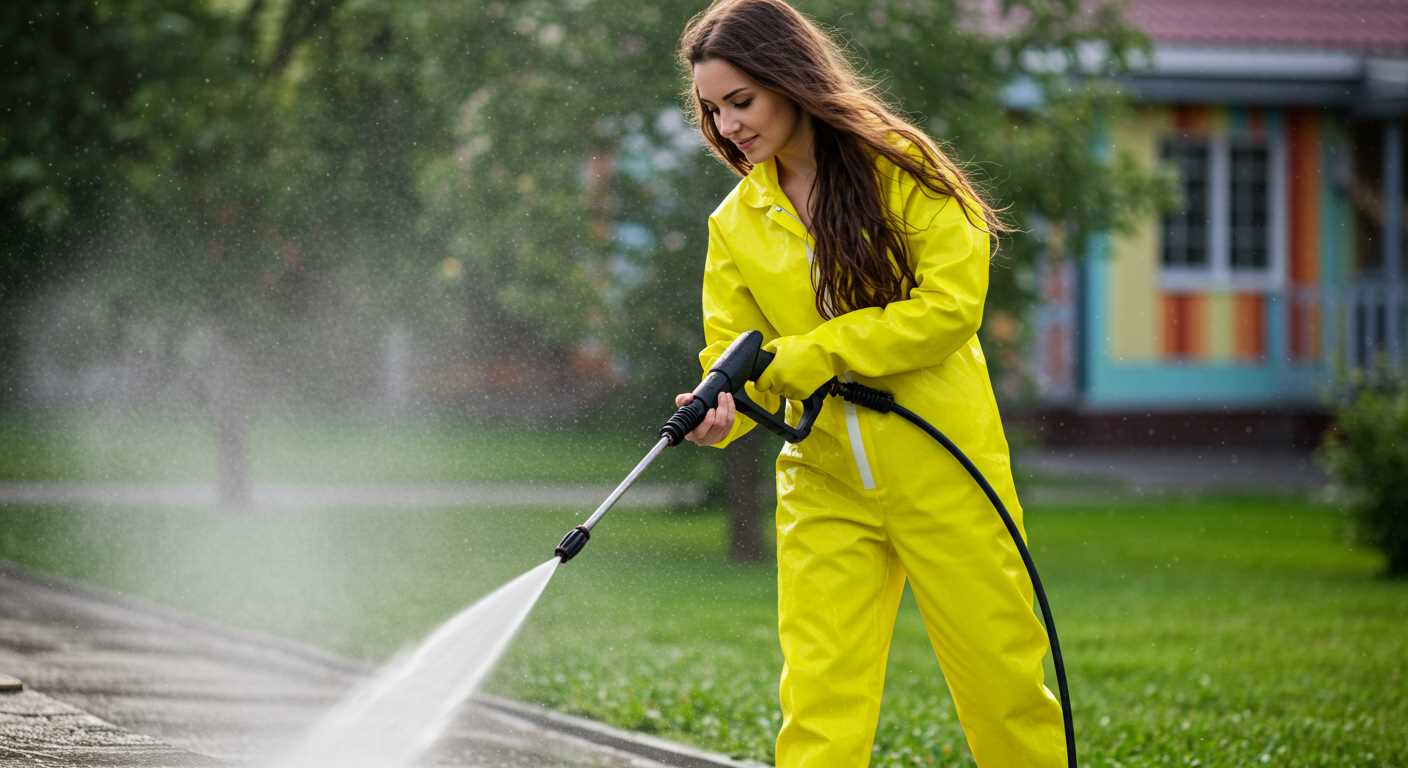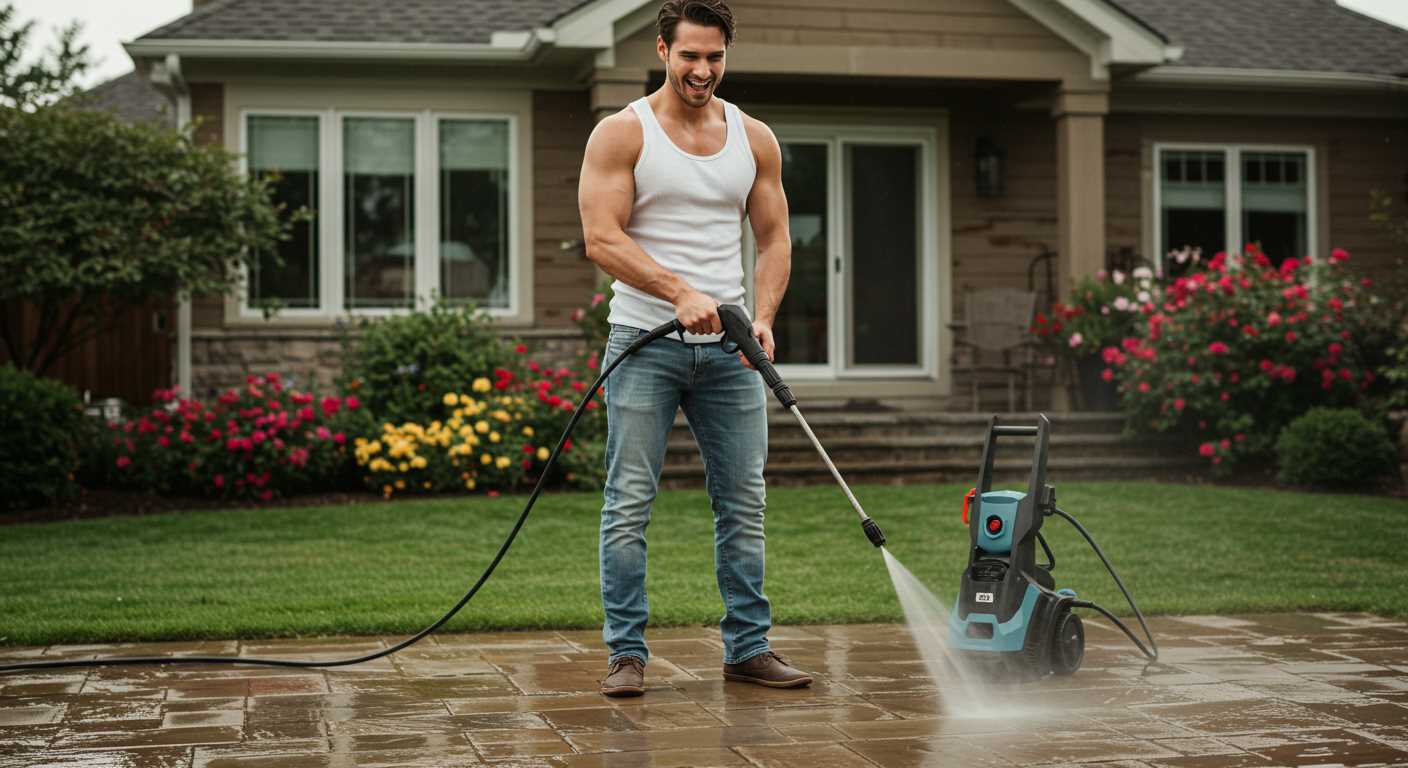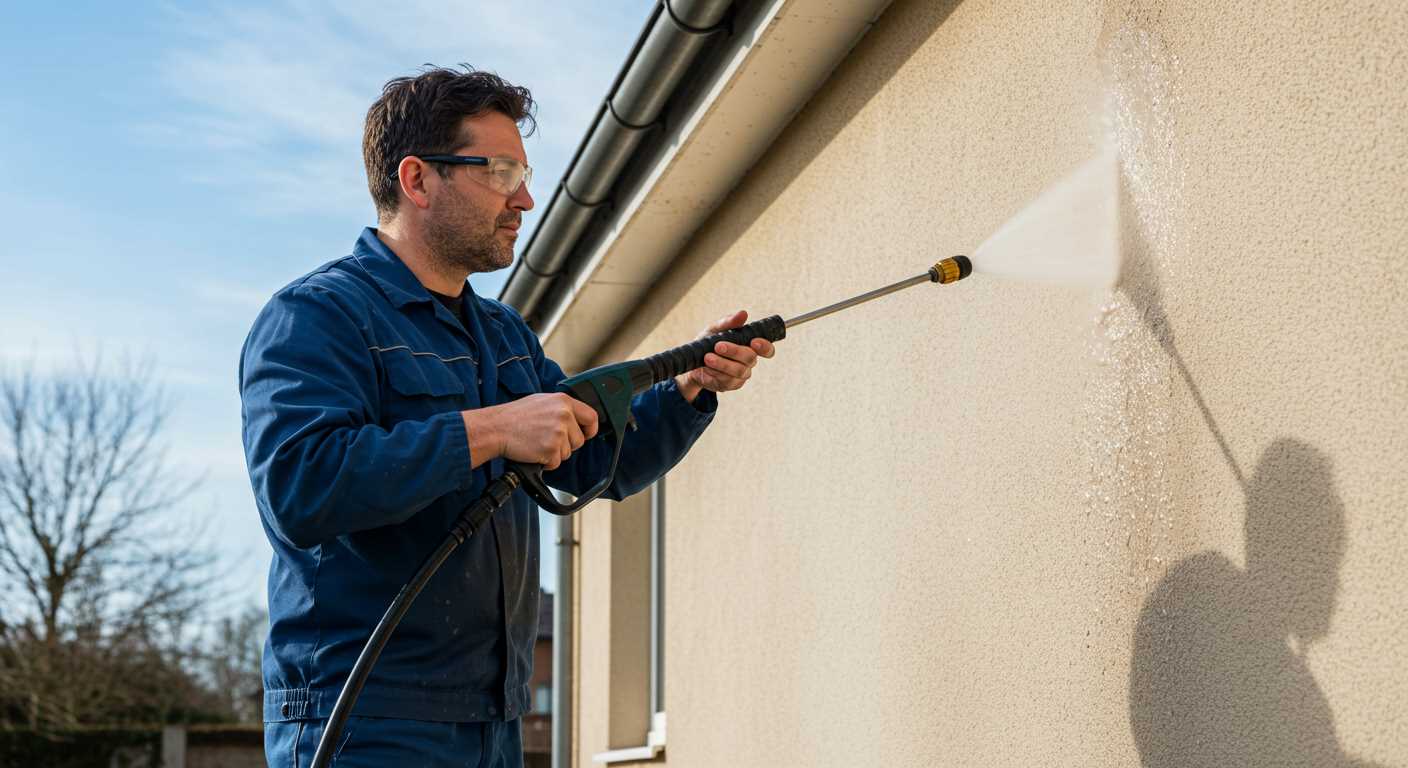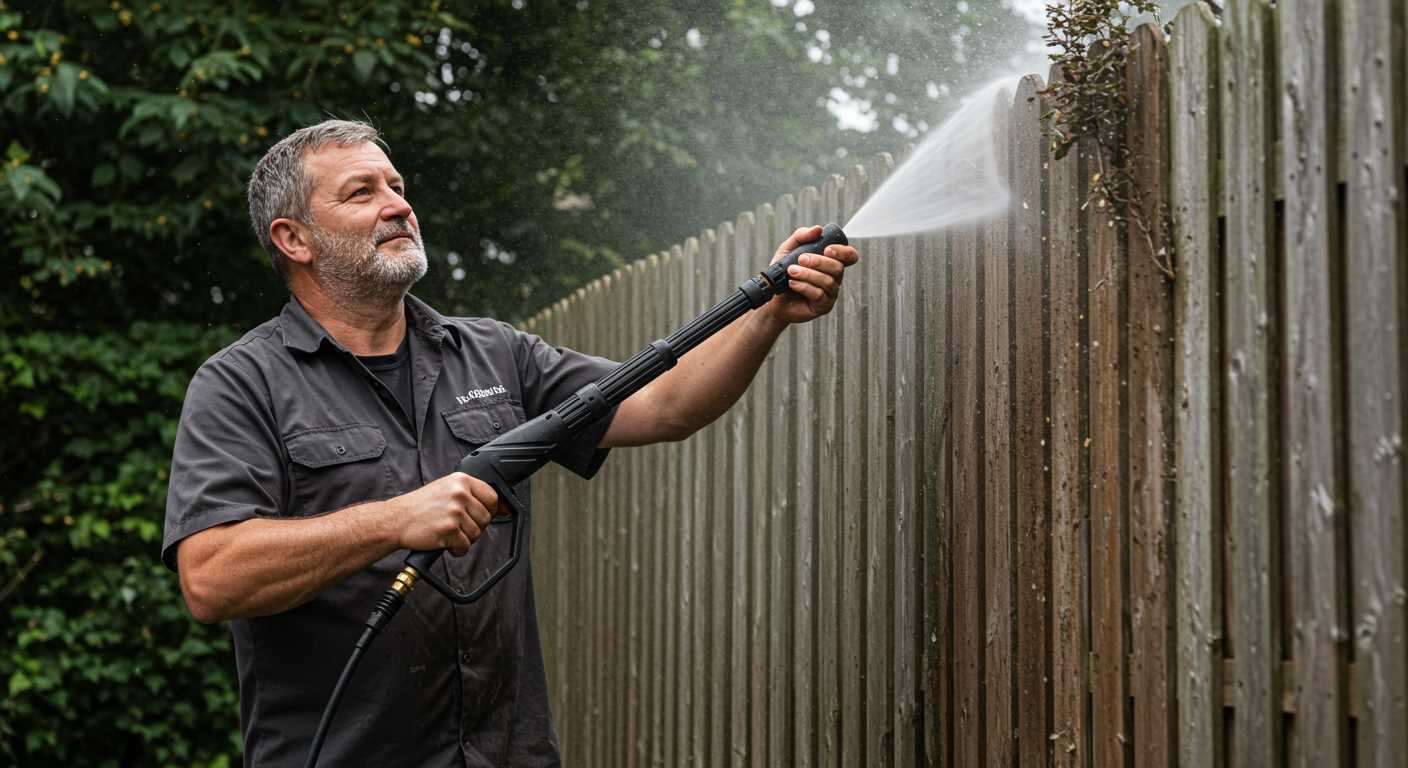



When faced with an obstruction in your cleaning device, the quickest remedy is to start by checking the nozzle for clogs. Detach the nozzle and rinse it under warm water, using a soft brush if necessary to remove any stubborn debris. This step often resolves the issue immediately.
If the blockage persists, inspect the hose. Look for kinks, twists, or any signs of damage that could impede water flow. Straightening out the hose or replacing damaged sections can frequently restore functionality within minutes.
Don’t overlook the water source. Ensure that the inlet filter is clean and free of sediment. Disconnect the unit and inspect this filter–rinsing it under running water will allow for optimal performance. If issues continue, check for blockages in the water supply line itself.
For persistent difficulties, consider using a pin or tiny wire to clear the inlet and outlet valves. Take care to avoid damaging any components during this process. Regular maintenance, including descaling and cleaning, can prevent buildup and prolong the lifespan of your equipment.
Steps to Clear Blockages in a Bosch Cleaning Device
Begin with switching off and disconnecting the power supply for safety. Remove the spray gun from the hose and inspect the nozzle for any debris. Clean it using a needle or a thin wire to dislodge any material stuck inside.
Next, check the high-pressure hose for kinks or damage. Ensure that it is properly attached to both the unit and the water source. Run water through the hose without any attachments to confirm a clear flow.
Inspect the inlet filter at the water intake. If it appears clogged, rinse it under running water, or replace it if necessary. A clean filter ensures that water consistently flows into the device without obstruction.
If issues persist, look into the detergent tank. Empty any remaining cleaning solution and rinse thoroughly to eliminate potential blockages in the siphoning system.
Follow these additional steps:
- Check all connections for leaks or loose fittings.
- Use a pressure gauge to test the outgoing water pressure; low pressure can indicate internal blockages.
- If equipped with a cleaner intake, verify its functionality and cleanliness.
Finally, if blockages continue despite these measures, it may be beneficial to consult the manufacturer’s manual for specific guidance on dismantling components for deeper cleaning. Regular maintenance can prevent these issues from recurring.
Identifying Common Clog Causes in Bosch Pressure Washers
Start by examining the water source. Ensure the inlet filter is clean, as debris can inhibit flow and lead to blockages. If the water supply is contaminated with dirt or gravel, it’s likely to create issues. Always use water from a reliable source to prevent this type of problem.
Next, look at the hoses and connections. Check for kinks, twists, or pinches which can restrict water movement. If the hoses are old or damaged, they might also be the source of the issue, so inspect them thoroughly for wear and tear.
Inspecting the Nozzle

The nozzle can accumulate grime and mineral deposits, affecting performance. I recommend removing the nozzle and soaking it in a vinegar solution to dissolve any build-up. After soaking, use a soft brush to clean it thoroughly.
Assessing the Pump
An obstructed pump can be a significant cause for reduced performance. Listen for unusual noises–this can indicate internal blockages. If you suspect the pump is the problem, disassemble it according to the manufacturer’s guidelines and check for any debris or damage.
Regular maintenance is vital. Following these checks, ensure to backflush the system periodically to prevent future blockages. By staying proactive, you can prolong the life of your cleaning equipment and enhance its performance.
Gathering Tools and Materials for the Unclogging Process

First, assemble a few essential tools: a socket wrench set, pliers, and a flathead screwdriver. These will help disassemble any required components swiftly. Additionally, keep a bucket handy for any accumulated water or debris that may spill during the process.
A flexible wire brush can aid in scraping away stubborn obstructions that may have built up in the nozzle or hose. Always have a garden hose nearby; it’s useful for flushing out lines after you’ve cleared the blockage.
Safety goggles are a must; protect your eyes from any splashes, especially when dealing with high-pressure areas. Gloves will also be beneficial to guard your hands against sharp edges or grime.
Lastly, consider having a lubricant on standby, as it can assist in loosening persistent clogs or stuck components. With these tools and materials ready, you’ll be prepared to tackle any issues effectively.
Safe Shutdown and Preparation of Your Cleaning Equipment
Before starting any maintenance task, ensure your cleaning equipment is safely powered down. This prevents any unintended spraying or electric shocks. Follow these steps:
- Turn off the appliance by switching the power button to the ‘off’ position.
- Disconnect the power cable from the outlet, removing any risk of accidental activation.
- Release any built-up pressure in the system by squeezing the trigger on the spray gun. Hold it until the water flow ceases.
- Detach the water supply hose from the inlet to prevent water from trapped within the system.
Preparing for Maintenance

Proper preparation is key to successful servicing:
- Gather protective gear, including gloves and goggles, to safeguard against debris and water splashes.
- Inspect hoses and connections for any visible damage or wear, replacing them as needed.
- Clean the external surfaces thoroughly, reducing the risk of contaminating internal components during maintenance.
- Check the user manual for specific instructions related to maintenance, ensuring compliance with the manufacturer’s guidelines.
Being vigilant about safety and preparation not only extends the lifespan of your equipment but also enhances performance during use.
Inspecting and Cleaning the Inlet Filter of the Washing Appliance
The inlet filter is a key component for maintaining optimal performance. To begin, disconnect the unit from the power supply and the water source. Locate the filter, which is typically found where the water hose connects to the device.
Remove the filter carefully using a flathead screwdriver or pliers, depending on its design. Inspect it for blockages, dirt, or any signs of wear. It’s advisable to rinse it thoroughly under running water. For stubborn deposits, a soft-bristled brush can help dislodge debris effectively.
If the filter appears damaged or excessively worn, replacement might be necessary. New filters can often be sourced from the manufacturer’s website or local retailers. Always ensure the correct part number is referenced to avoid compatibility issues.
Once cleaned or replaced, reinsert the filter, ensuring a snug fit. Reconnect the water supply, and check for any leaks. Finally, conduct a test run to confirm that the unit is functioning properly without interruptions.
| Action | Detail |
|---|---|
| Disconnect | Power and water supply |
| Locate | Find the inlet filter at the hose connection |
| Remove | Use appropriate tools to detach the filter |
| Inspect | Check for blockages or damage |
| Clean | Rinse under water, using a brush if needed |
| Replace | If damaged, obtain a new filter |
| Reconnect | Secure the filter and reattach the water supply |
| Test | Run the unit to check for proper operation |
Clearing Blockages in the High-Pressure Hose
A simple first step is to visually inspect the high-pressure hose for any visible kinks or damage. A hose bent too sharply can restrict water flow, causing inadequate performance. If any bends are present, straighten them out gently to restore the original shape.
Next, disconnect the hose from both the cleaning unit and the nozzle. This will help to isolate the problem and allow access to both ends for a thorough examination. Check for foreign objects lodged in the hose, such as debris or small stones. If you find anything, carefully remove it with tweezers or similar tools.
To further assess the obstruction, I recommend running a water flow test. Attach the hose to a water source without connecting it to the cleaning machine, then turn on the tap. Observe if the water flows freely through the hose. If it seems restricted, consider using a flexible cleaning rod or a plumber’s snake to push through the hose. Insert gently from one end while ensuring not to damage the interior lining.
If the blockage persists, try soaking the hose in a vinegar solution to dissolve any built-up mineral deposits. Mix one part vinegar with three parts water, and allow the hose to soak for a few hours. Rinse thoroughly afterwards to remove any residual vinegar and loosened debris.
Lastly, always ensure the hose is completely dry before reattaching it to the cleaning device. Moisture trapped within can lead to further issues. Once everything is clear and clean, reattach the hose, ensuring all connections are tight to prevent leaks.
Cleaning the Nozzle for Optimal Performance
Begin by detaching the nozzle from the lance. This often accumulates debris, which can significantly impede water flow. Utilise a small brush or a toothpick to gently remove any visible build-up within the nozzle opening.
Next, soak the nozzle in a solution of warm water mixed with a mild detergent for approximately 15 to 30 minutes. This process will help break down any grease or stubborn deposits, making it easier to clean.
Rinse thoroughly with clean water, ensuring that all soap residue is removed. Inspect the nozzle under good lighting. If you notice any remaining blockages, repeat the cleaning method or use a fine wire to clear those sections.
For nozzles with adjustable spray patterns, ensure the adjustment mechanism is free of obstructions. If the nozzle has a screen filter, remove it and clean it separately to maintain optimal water dispersion.
After cleaning, reattach the nozzle to the lance securely. Conduct a test run to verify that the water flow is even and strong across all spray settings. If issues persist, consider replacing the nozzle altogether for improved performance.
Testing the Equipment After Clearing Blockages

After resolving any issues, reconnect the water supply. Before plugging the machine into the power source, ensure all connections are secure and leak-free. A thorough check prevents further complications during operation.
Switch on the motor and let the equipment run for a minute without applying any spray. This allows the system to stabilize and any residual water to circulate, improving function.
Engage the trigger gently, observing the water flow. Look for consistent pressure; it should be smooth and uninterrupted. If the spray fluctuates, additional blockages may still exist, or the nozzle could require further attention.
Perform a test on a small area of surface material to verify that the cleaning efficiency is satisfactory. Maintain a safe distance to avoid damage while assessing the effectiveness of the spray pattern. This will help confirm that all components are functioning harmoniously.
After the initial test, monitor for any unusual sounds or vibrations, as these can indicate internal issues that need addressing. If everything is in order, gradually increase the intensity and tackle larger areas.
Finally, check and clean any residues from the nozzle and fittings after usage. Regular maintenance will prolong the lifespan of the equipment and maintain optimal performance.
FAQ:
What are the common signs that my Bosch pressure washer is clogged?
Common signs of a clog in your Bosch pressure washer include reduced water flow, inconsistent pressure during operation, or the machine shutting off unexpectedly. You may also notice that the nozzle is not spraying properly or that water is leaking from connections due to back pressure. If you observe any of these issues, it may indicate that a thorough inspection and cleaning are needed.
How can I safely unclog the nozzle of my Bosch pressure washer?
To unclog the nozzle, first unplug the washer and detach the spray gun and nozzle. Use a fine wire or a nozzle cleaning kit to carefully clear any blockages. Rinse the nozzle under warm water to wash away any debris. After cleaning, reattach the nozzle and test the washer on a low-pressure setting to ensure smooth operation before resuming normal use.
What materials or tools will I need to clean my Bosch pressure washer?
For cleaning your Bosch pressure washer, helpful tools and materials include a bucket, clean water, sponge, soft brush, and a nozzle cleaning kit. Depending on the severity of the clog, you may also need a screwdriver to access certain components of the washer. Always make sure to have safety goggles and gloves to protect yourself during the process.
Is it advisable to use vinegar or other chemicals to unclog the pressure washer?
While some users recommend using vinegar or mild detergents to aid in removing clogs, caution is advised. Chemicals can sometimes damage internal components, so it’s best to refer to the user manual for recommendations specific to your Bosch pressure washer model. If you do choose to use a solution, ensure it is compatible and rinse thoroughly after cleaning to avoid residue build-up.
How can regular maintenance help prevent clogs in my Bosch pressure washer?
Regular maintenance can significantly reduce the likelihood of clogs in your Bosch pressure washer. This includes routinely checking the inlet filter for debris, cleaning or replacing the nozzle after use, and flushing the system with clean water post-operation. Additionally, storing the washer in a dry, clean environment helps protect it from dust and dirt accumulation, which can contribute to clogs.








